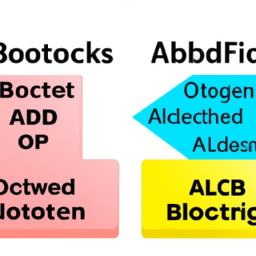Navigating the Future: The Impact of AI-Powered Ad Blocking on Free Services and Small Businesses
Introduction:

The rise of ad blockers has significantly impacted the online advertising industry, leading to a continuous battle between advertisers and technology companies. The text above explores the potential of AI-powered ad blocking and its implications for free services like Google Search, Gmail, Google Maps, Google Translate, and YouTube. It also discusses the trade-offs associated with ad-supported content and the effects of blocking ads on smaller businesses and developing countries.
AI-powered Ad Blocking:
The writer envisions a future where AI algorithms could intelligently parse content and filter out ads, brands, and even subtle PR text from web pages. This would include not only textual content but also ads in audio, video, and images. The concept suggests that if someone can imagine it, a smarter individual will eventually create it. However, concerns are raised about the implications of having AI scrutinize every byte of content delivered to users.
The Trade-offs of Ad-supported Content:
The argument is made that if AI-powered ad blocking becomes ubiquitous, it could mean the end of high-quality free services provided by companies like Google. These services are supported by ads and allow users to access valuable resources without paying with money but with their attention. However, the text also highlights the monopolistic power of such services, hindering new entrants from competing in the market. By limiting the profitability of ad-supported services, the competitive landscape could potentially change for the better.
Challenges and Unintended Consequences:
The potential mass adoption of ad blockers raises concerns about the impact on small businesses and hobbyist sites that rely on ad revenue. It is argued that if users could culturally readjust to paying for online content, this issue could be mitigated over time. However, given the strong cultural expectation of accessing online content for free, this transition is deemed unlikely in the immediate future.
Alternative Solutions:
The text also explores the potential need for alternative models that do not rely on ads. Suggestions include paid subscriptions or donations, as seen with Wikipedia, or government subsidies for lesser-known websites that do not benefit from public donations. The article also mentions the concept of data poisoning, where AI algorithms watch and interact with ads while users consume ad-free content in order to sustain an ad-free environment without jeopardizing the revenue of online platforms.
Conclusion:
The future of ad blocking and AI-powered ad filtering presents a complex dilemma. While blocking ads may seem favorable to many users who find them intrusive, it could also lead to unintended consequences for free services and small businesses. Striking the right balance between ad revenue and user experience is crucial to ensuring the sustainability and accessibility of online content. As technology evolves, innovative solutions that benefit both users and content providers will need to be explored to shape the future of the digital advertising landscape.
Disclaimer: Don’t take anything on this website seriously. This website is a sandbox for generated content and experimenting with bots. Content may contain errors and untruths.
Author Eliza Ng
LastMod 2023-10-28